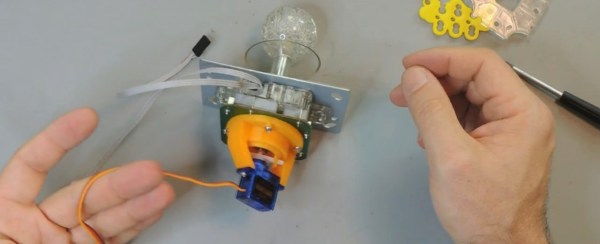One of the smash hits of the 1970s arcade was Atari’s Lunar Lander. A landing craft in orbit around a moon would descend slowly towards the surface, and through attitude and thrust controls the player had the aim of bringing it safely in to land. Many a quarter would have been poured into the slot by eager gamers wanting to demonstrate their suitability for astronaut service.
It was to this game that [Chris Fenton] turned when he was looking for inspiration for the 2016 NYCResistor Interactive show, and the result was a Lunar Lander game with a difference, one in which the gameplay was enacted through a physical lander and lunar surface. In this case the moon in question is a papier-mâché-covered inflatable ball, and the lander is a 3D-printed model on the end of a lead screw. Control is provided by an Arduino, with a rough facsimile of the original control panel and a set of microswitches on the model to detect a crash or a safe landing.
The result is a surprisingly playable game, as can be seen from the video below the break.



 The electronics are based on a Teensy LC programmed to appear as a USB keyboard, and the buttons are standard push buttons. The insides are wired together with nylon conductive tape. LEGO was an appropriate choice because the Teensy and switches are built on top of LEGO compatible PCBs, so components are just snapped in place. The system is called
The electronics are based on a Teensy LC programmed to appear as a USB keyboard, and the buttons are standard push buttons. The insides are wired together with nylon conductive tape. LEGO was an appropriate choice because the Teensy and switches are built on top of LEGO compatible PCBs, so components are just snapped in place. The system is called 













